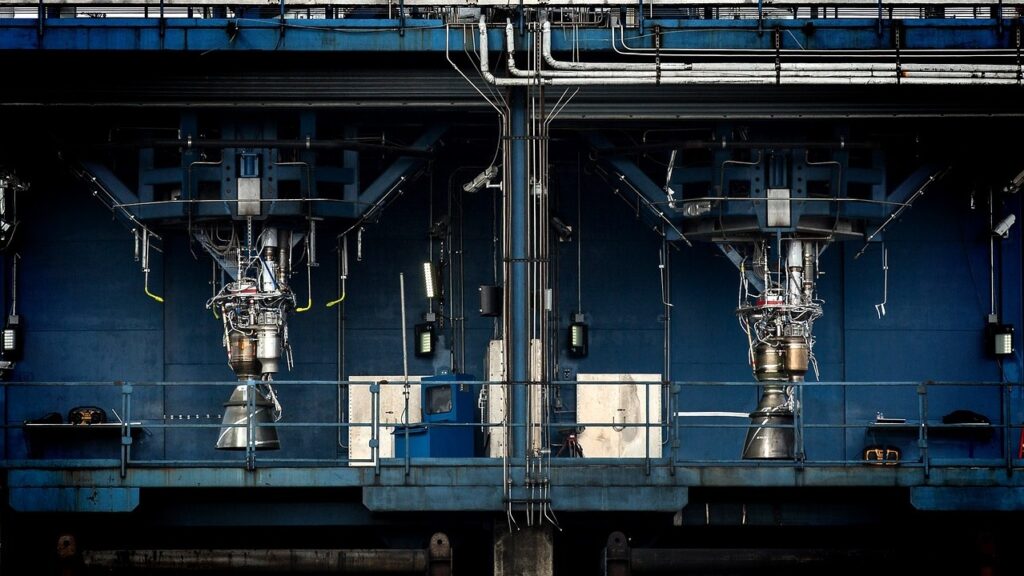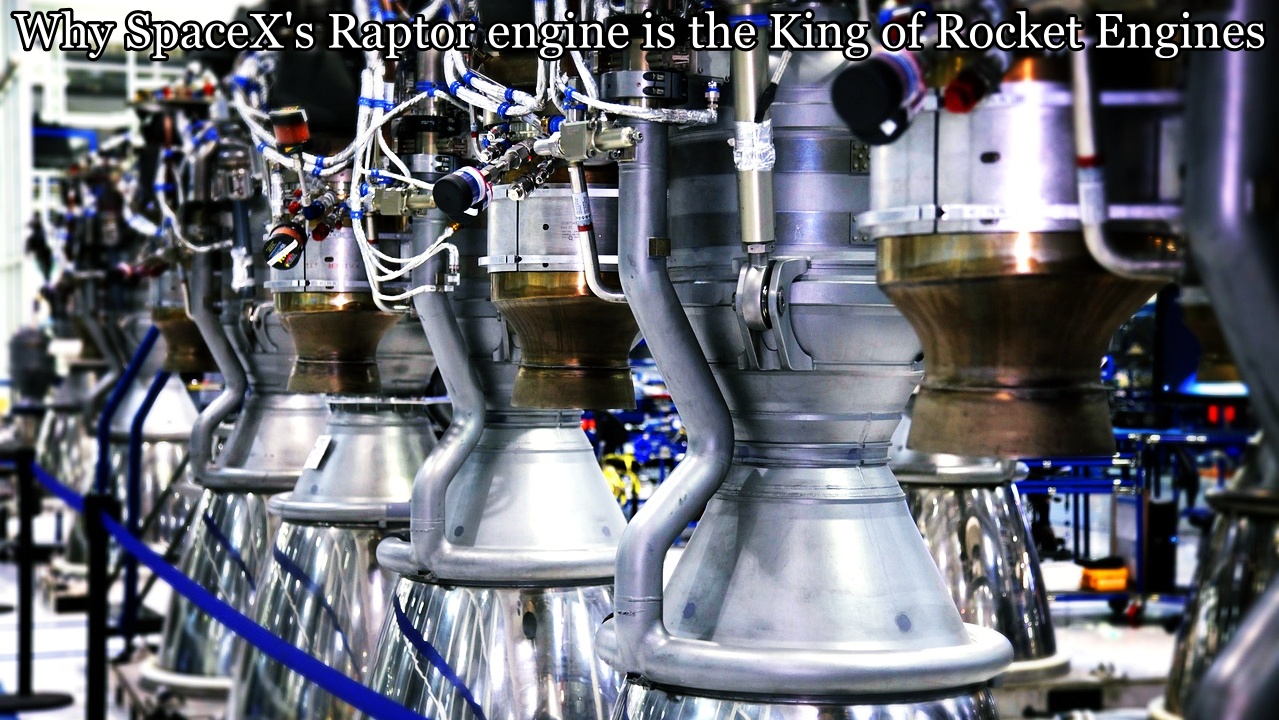Six months ago, the world was left stunned by the unveiling of SpaceX’s latest engineering masterpiece – the Raptor 3 engine. The reaction was completely justified. This new iteration of the Raptor engine has pushed the boundaries of innovation, achieving extraordinary capabilities that were once thought impossible. With groundbreaking advancements in power, efficiency, and reliability, Raptor 3 is not just an improvement; it’s a leap ahead of its time.
But how did the Raptor engine evolve to match this level of sophistication? To truly appreciate its cutting-edge design, we need to take a step back and explore the fascinating journey that brought it here.
The Origins of the Raptor Engine: A Vision to Revolutionize Space Travel
The evolution of the Raptor engine is a story of relentless innovation, engineering brilliance, and a vision to revolutionize space travel. The origins of the Raptor engine can be traced back to SpaceX’s earliest ambitions of reaching Mars. Long before the first prototypes were built, Elon Musk envisioned a highly efficient, reusable, and powerful propulsion system capable of supporting interplanetary travel.
SpaceX aimed not just to build an engine that could rival contemporary designs but to create one that would outperform them in efficiency, thrust, and reusability. However, the path to achieving this goal was far from straightforward.

Fueling Innovation: The Shift to Methane
One of the most significant early decisions in the development of Raptor was the choice of fuel. Unlike the Merlin engines used in the Falcon 9 and Falcon Heavy rockets, which rely on RP1 (a refined form of kerosene) and liquid oxygen, Raptor was designed to use methane as its primary fuel. This choice was not arbitrary.
Methane offers several advantages, especially for deep space missions. It burns cleaner than kerosene, reducing carbon buildup within the engine and making it easier to reuse without extensive refurbishment. More importantly, methane can be produced on Mars using the Sabatier process, which combines carbon dioxide from the Martian atmosphere with hydrogen to produce methane and water. This innovation meant that future missions to Mars could, in theory, refuel their spacecraft on the surface rather than carrying all the required propellants from Earth.
The Development of the Raptor Engine: Overcoming Early Challenges
The development of the first Raptor prototypes was a challenging process. Unlike the Merlin engine, which had gone through incremental improvements, the Raptor represented an entirely new design philosophy. One of its defining features is the full-flow staged combustion cycle. In simpler terms, this means that both the oxidizer and fuel are pre-burned before reaching the main combustion chamber, resulting in a more efficient and powerful burn.
While this combustion cycle offers significant performance benefits, it is also incredibly complex and difficult to perfect. Before SpaceX, only a few full-flow staged combustion cycle engines had ever been tested, and none had been successfully deployed in operational rockets.
SpaceX’s Rapid Iteration Approach: Overcoming Setbacks
The early versions of Raptor underwent extensive ground testing at SpaceX’s facilities in McGregor, Texas. Engineers encountered several setbacks, including combustion instability, overheating, and materials degradation. Known for its rapid iteration approach, SpaceX tackled these issues by continuously improving the engine design and incorporating lessons learned from each test.
In 2019, the first-generation Raptor engine was tested in a real flight scenario with the Starhopper vehicle, an early predecessor to Starship. The test was a resounding success, marking a major milestone for Raptor’s development.
Raptor 2: The Next Evolution
As SpaceX continued to develop Starship, the Raptor engine saw continuous refinements. The Raptor 2 iteration featured several key improvements. It was more powerful, easier to manufacture, and more reliable. One of the most significant advancements was its increased thrust output. While the first-generation Raptor produced around 185 tons of thrust, Raptor 2 could exceed 230 tons.
Additionally, SpaceX optimized the manufacturing process, reducing production time and costs. By leveraging advanced 3D printing techniques and automation, SpaceX could produce engines faster and at a lower cost than traditional rocket engines, which often took months or even years to manufacture.
Raptor 3: The Most Advanced Iteration
Enter Raptor 3, the latest and most advanced iteration of the engine. Unlike its predecessors, Raptor 3 pushed the limits of efficiency and power even further. Reports indicate that the engine is capable of producing over 250 tons of thrust, placing it among the most powerful rocket engines ever built.
Beyond its raw power, Raptor 3 also features enhanced durability and reusability. One of SpaceX’s goals has always been to minimize refurbishment time between flights. Traditional rocket engines require extensive maintenance after each launch, which drives up costs and slows down turnaround times. Raptor 3 is designed to withstand multiple flights with minimal servicing, a crucial factor for Starship’s future as it is designed to launch, land, and relaunch quickly.
Efficiency: A Game-Changer for Space Travel
Another major achievement with Raptor 3 is its improved efficiency. The specific impulse, which measures how efficiently a rocket engine converts fuel into thrust, has been optimized to provide the best performance possible. This translates to greater payload capacity, longer travel distances, and greater operational flexibility.
The significance of these advancements cannot be overstated. They directly impact the feasibility of missions to the Moon, Mars, and beyond, and make the dream of interplanetary travel closer to reality.
The Impact of Raptor 3 on the Aerospace Industry
The rapid advancements in rocket engine technology have forced other aerospace companies to rethink their approaches. Competitors like Blue Origin, Rocket Lab, and even NASA and Roscosmos are now facing the challenge of keeping up with SpaceX’s pace of innovation.
SpaceX’s ability to iterate quickly and push boundaries has disrupted the traditional aerospace industry, which has long been known for slow and costly development cycles. SpaceX has demonstrated that rapid iteration and cutting-edge manufacturing techniques can result in exponential improvements.
Looking Ahead: The Future of Raptor and Starship
Looking ahead, Raptor 3 will play a critical role in SpaceX’s long-term vision. Starship, powered by these engines, is expected to become the backbone of future space exploration efforts, whether it’s launching satellites, carrying astronauts to the Moon under NASA’s Artemis program, or eventually transporting humans to Mars.
The success of these missions will largely depend on the reliability and performance of the Raptor engine. Despite all the advancements, SpaceX will continue improving, refining, and perfecting future iterations of Raptor.
The Ongoing Journey of Raptor: Challenges and Future Goals
While Raptor 3 represents a monumental achievement, several challenges remain. Engine refurbishment continues to be a critical issue, as welding makes repairs complex and time-consuming. SpaceX must find innovative solutions to make maintenance easier and more efficient.
Additionally, fuel and oxidizer leaks have been a recurring problem, with failures like the Ship 34 incident highlighting the need for further refinements in design and plumbing. SpaceX is expected to address these concerns in future versions of Raptor, ensuring the engine’s reliability and longevity.
Conclusion: Raptor’s Role in SpaceX’s Bold Future
In the end, the development of the Raptor 3 engine is not just about creating a better rocket engine. It represents a fundamental shift in how space technology is approached. By embracing rapid iteration, leveraging cutting-edge manufacturing techniques, and setting ambitious goals, SpaceX has demonstrated what is possible when bold vision meets technical expertise.
The impact of this innovation will be felt for decades to come, shaping the future of space exploration in ways we are only beginning to understand. The journey of the Raptor engine is far from over, and with every new iteration, we are closer to achieving humanity’s dream of reaching the stars.
FAQ
The Raptor engine is a methane-powered rocket engine developed by SpaceX. It’s designed to be highly efficient, reusable, and capable of supporting interplanetary missions, particularly to Mars.
Unlike traditional rocket engines that use RP1 (kerosene) and liquid oxygen, the Raptor engine uses methane and liquid oxygen. This fuel choice provides cleaner burns, reduces carbon buildup, and supports deep space missions by allowing fuel production on Mars using the Sabatier process.
The full-flow staged combustion cycle is a design where both fuel and oxidizer are pre-burned before entering the main combustion chamber. This design allows for more efficient and powerful burns, though it’s more complex and difficult to perfect.
The Raptor 3 is capable of producing over 250 tons of thrust, making it one of the most powerful rocket engines ever built.
The Raptor engine is crucial for Starship’s mission of launching, landing, and relaunching spacecraft. It provides the necessary thrust and reusability required for rapid turnarounds and deep space exploration, including missions to the Moon and Mars.
Methane, used as fuel in the Raptor engine, can be produced on Mars using the Sabatier process. This allows spacecraft to refuel on the Martian surface rather than carry all propellants from Earth, making Mars missions more feasible.
Raptor engines are designed to be reused multiple times with minimal servicing between flights. This reduces costs and turnaround time, which is vital for SpaceX’s goal of making space travel more cost-effective and efficient.
The Raptor 2 engine saw several improvements, including:
Increased thrust (over 230 tons).
Faster and more efficient manufacturing processes using 3D printing and automation.
Greater reliability and easier production at a lower cost.
The main challenges facing the Raptor engine include:
Engine refurbishment, as repairs are time-consuming and complex due to the use of welding.
Fuel and oxidizer leaks during test flights, which can lead to catastrophic failures. SpaceX continues to refine these areas for future iterations.
The Raptor engine’s journey is far from over. SpaceX continues to improve its design, focusing on increasing efficiency, thrust, and reliability. Future iterations will address current challenges like refurbishment and fuel leakage, with the ultimate goal of supporting space travel to the Moon, Mars, and beyond.
Read More:


1 thought on “This Is Why SpaceX’s Raptor engine is the King of Rocket Engines”